- Home
- Quizzes
- My Quiz Activity
- Newsletters
- MY FAVORITES
- Add Sports/Teams
- SPORTS
-
NFL
- NFL Home
- Arizona Cardinals
- Atlanta Falcons
- Baltimore Ravens
- Buffalo Bills
- Carolina Panthers
- Chicago Bears
- Cincinnati Bengals
- Cleveland Browns
- Dallas Cowboys
- Denver Broncos
- Detroit Lions
- Green Bay Packers
- Houston Texans
- Indianapolis Colts
- Jacksonville Jaguars
- Kansas City Chiefs
- Las Vegas Raiders
- Los Angeles Chargers
- Los Angeles Rams
- Miami Dolphins
- Minnesota Vikings
- New England Patriots
- New Orleans Saints
- New York Jets
- New York Giants
- Philadelphia Eagles
- Pittsburgh Steelers
- San Francisco 49ers
- Seattle Seahawks
- Tampa Bay Buccaneers
- Tennessee Titans
- Washington Commanders
-
MLB
- MLB Home
- Athletics
- Arizona Diamondbacks
- Atlanta Braves
- Baltimore Orioles
- Boston Red Sox
- Chicago White Sox
- Chicago Cubs
- Cincinnati Reds
- Cleveland Guardians
- Colorado Rockies
- Detroit Tigers
- Houston Astros
- Kansas City Royals
- Los Angeles Angels
- Los Angeles Dodgers
- Miami Marlins
- Milwaukee Brewers
- Minnesota Twins
- New York Yankees
- New York Mets
- Philadelphia Phillies
- Pittsburgh Pirates
- San Diego Padres
- San Francisco Giants
- Seattle Mariners
- St. Louis Cardinals
- Tampa Bay Rays
- Texas Rangers
- Toronto Blue Jays
- Washington Nationals
-
NBA
- NBA Home
- Atlanta Hawks
- Boston Celtics
- Brooklyn Nets
- Charlotte Hornets
- Chicago Bulls
- Cleveland Cavaliers
- Dallas Mavericks
- Denver Nuggets
- Detroit Pistons
- Golden State Warriors
- Houston Rockets
- Indiana Pacers
- Los Angeles Clippers
- Los Angeles Lakers
- Memphis Grizzlies
- Miami Heat
- Milwaukee Bucks
- Minnesota Timberwolves
- New Orleans Pelicans
- New York Knicks
- Oklahoma City Thunder
- Orlando Magic
- Philadelphia 76ers
- Phoenix Suns
- Portland Trail Blazers
- Sacramento Kings
- San Antonio Spurs
- Toronto Raptors
- Utah Jazz
- Washington Wizards
-
NHL
- NHL Home
- Anaheim Ducks
- Boston Bruins
- Buffalo Sabres
- Calgary Flames
- Carolina Hurricanes
- Chicago Blackhawks
- Colorado Avalanche
- Columbus Blue Jackets
- Dallas Stars
- Detroit Red Wings
- Edmonton Oilers
- Florida Panthers
- Los Angeles Kings
- Minnesota Wild
- Montreal Canadiens
- Nashville Predators
- New Jersey Devils
- New York Islanders
- New York Rangers
- Ottawa Senators
- Philadelphia Flyers
- Pittsburgh Penguins
- San Jose Sharks
- Seattle Kraken
- St. Louis Blues
- Tampa Bay Lightning
- Toronto Maple Leafs
- Utah Hockey Club
- Vancouver Canucks
- Vegas Golden Knights
- Washington Capitals
- Winnipeg Jets
- NCAAF
- NCAAM
- Olympics
- Boxing
- Entertainment
- Lifestyle
- Golf
- MMA
- Soccer
- Tennis
- Wrestling
- Sports Betting
- More Sports
- RESOURCES
- My Account
- YB on Facebook
- YB on Twitter
- YB on Flipboard
- Contact Us
- Privacy Policy
- Terms of Service

The top 50 college defensive players of all time
We've looked at the top running backs, quarterbacks and wide receivers in the history of college football. Now on to the best defensive players.
When dealing with the offensive players, it is easier to define greatness with statistics, awards and tangible numbers. On the defensive side, it is a bit more difficult. Defensive statistics vary by school; some stats weren't recorded until more recently, and players decades ago would play on both sides of the ball.
So for this list, you can ditch the numbers and just look at the impact these 50 men had on college football. While it may be harder to define, you know it when you see it.
LaVar Arrington, Penn State

Arrington was a physical marvel, which was defined by his signature moment — when he anticipated the snap count against Illinois and made a tackle for loss. He won the Butkus, Bednarik and Lambert Awards in 1999 and finished ninth in the Heisman voting. He had a huge personality and was vocal and emotional, which was abnormal in Happy Valley, but he performed on the field, following in a line of great Nittany Lions linebackers.
Champ Bailey, Georgia

Bailey was a triple threat in college as a cornerback, receiver and kick returner. (He also ran track at Georgia.) He only picked off eight passes in his Dawgs career (quarterbacks didn't like throwing his way) yet won the Nagurski award in 1998 and was a consensus All-American in his junior season.
Chuck Bednarik, Penn

Bednarik is regarded as one of the toughest men to ever play football. When he got to Penn, he was a 20-year old who had flown combat missions during World War II. He played center and linebacker and made the All-American team as a junior and a senior. The Chuck Bednarik Award is given annually to college's top defensive player.
Brian Bosworth, Oklahoma
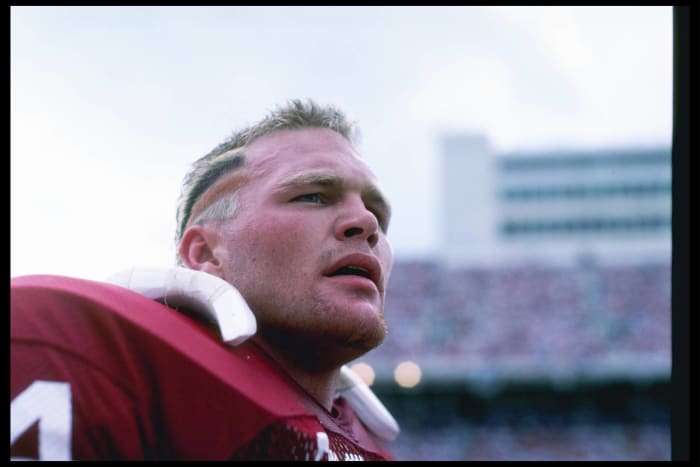
"The Boz" was a two-time All-American at Oklahoma and was known as much for his style as his performance. Bosworth was a physical beast, running all over the field and unleashing fierce hits. He is the only player to win the Butkus Award twice, but he was kicked off the team during his junior season after a positive steroid test.
Derrick Brooks, Florida State

The three time All-ACC player was feared for his ability to pursue the ball-carrier and fly in for the tackle. Florida State won four bowl games and a national championship while Brooks was in Tallahassee. He had 274 tackles, five picks and 8.5 sacks for his career. He would be a consensus All-American in 1993 and 1994.
Dick Butkus, Illinois

Butkus played center and linebacker during his Illini career. He was an All-American at both positions and was named team MVP his junior and senior seasons, accruing 374 tackles over three seasons. Butkus finished fourth in the Heisman voting in 1963 and third in 1964. The Butkus award is given to the year's best linebacker in high school, college and professional football.
Tommy Casanova, LSU

LSU's reputation as "Defensive Back U" may have started with Casanova. Casanova was all-SEC and All-American all three seasons in Baton Rouge and moonlighted as a receiver and kick returner. A 1971 cover of Sports Illustrated ran the headline "Tommy Casanova of LSU, Best Player in the Nation."
Jadeveon Clowney, South Carolina

He was a sought-after recruit that nearly every big-time program wanted, but he elected to stay in state. As a Gamecock, he quickly became one of the most feared players in college football. His mix of size and athleticism made him nearly unblockable and a terror for all quarterbacks he went up against. He won the SEC's Defensive Player of the Year in 2012 and despite a lackluster 2013 season (many observers felt he loafed during the year to protect himself for his NFL career), he became the top overall pick in the following draft.
Kenny Easley, UCLA
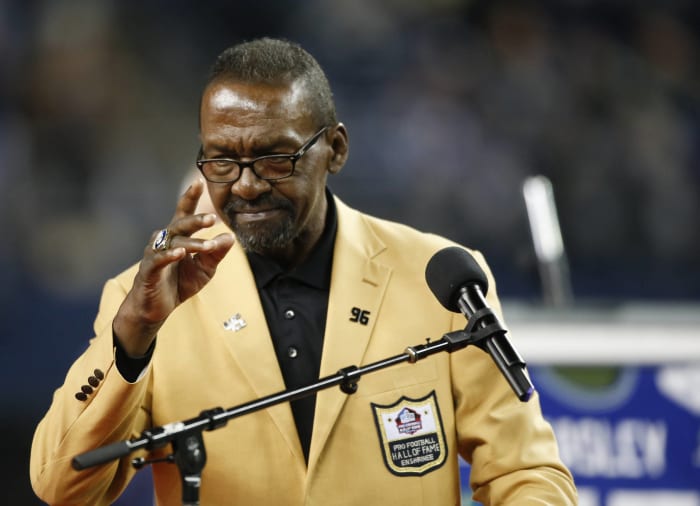
Easley was instantly a star at UCLA. He intercepted nine passes his freshman season and would go on to pick off 19 passes for his college career. He was a four-time All-Pac 10 performer, three time All-American and finished ninth in the 1980 Heisman balloting. He was an outstanding athlete who was a fierce tackler and hitter but fast enough to be great in coverage.
Steve Emtman, Washington

Emtman anchored one of the greatest Huskies defenses and led Washington to the 1991 national championship. In '91, he won the Outland, Lombardi and Willis Awards and finished fourth in the Heisman voting. Emtman was the No. 1 overall draft pick in 1992.
Pat Fitzgerald, Northwestern

Now Fitzgerald is the head coach for Northwestern, but back in the 1990s he was one of the best linebackers in the nation. He won two Bednarik Awards and two Nagurski Awards and was named the Big Ten Defensive Player of the Year twice. His greatness helped the Wildcats get to the 1996 Rose Bowl, the school's first bowl game in nearly 50 years.
Dwight Freeney, Syracuse

Freeney started for only two seasons at Syracuse but still became one of the best defensive players in school history. He recorded 34 sacks, including a school-record 17.5 in 2001. He held a streak of 17 straight games with at least one sack and once sacked Virginia Tech's Michael Vick 4.5 times in one game.
Rich Glover, Nebraska

Glover was a pivotal member of Nebraska's famed "Blackshirts" defense in the early 1970s. He would win national championships in 1970 and 1971. In 1972, he would win the Outland and Lombardi Trophies as well as finish third in the Heisman voting.
Randy Gradishar, Ohio State

Gradishar was a two-time All American who left Columbus as the all-time leading tackler. Woody Hayes called Gradishar the "best linebacker I ever coached." He also performed well in the classroom as an academic All-American.
Hugh Green, Pittsburgh

Green was an instant success at Pitt, piling up 12 sacks and two blocked kicks as a freshman. He would end his college career with 53 sacks, 52 tackles for loss, 24 forced fumbles and four interceptions. He would win the Walter Camp Award, Lombardi Award and Maxwell Award as well as earn both the Sporting News and UPI Player of the Year honors. In 1980, he would finish second in the Heisman voting.
Joe Greene, North Texas State

Greene wasn't highly recruited but quickly made his name at North Texas State (now North Texas) and, of course, in the NFL. "Mean Joe" Greene starred for the Mean Green as he led a defensive front that allowed just 2,507 yards rushing in three years for a less than 2 yards per rush average.
Ted Hendricks, Miami
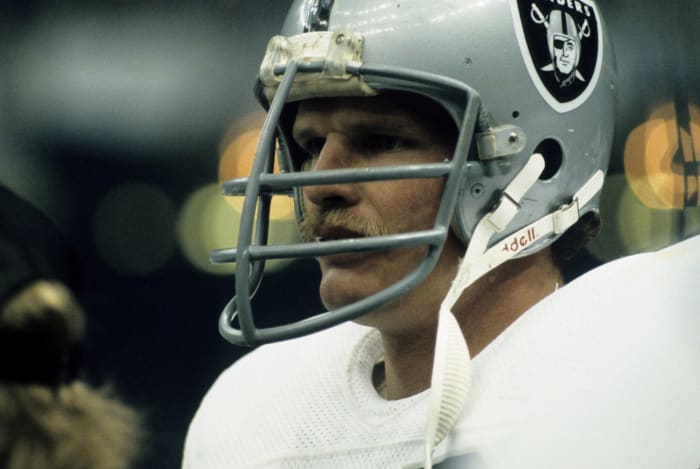
The "Stork" was one of the best defensive ends in college history. His specialty was creating turnovers; as a junior he caused nine of them by a variety of ways (strip, fumble recovery, interceptions, blocked kicks). Hendricks was a two-time first team All American and was named to the Football Writers Association of America's 75th anniversary team as a starting defensive end.
Ed Jones, Tennessee State

Ed "Too Tall" Jones played basketball and football at Tennessee State but would eventually quit hoops to concentrate on the sport that made him a legend. Jones had a career 38 sacks, including 12 in 1973. The Tigers would win the black college national championship in both 1971 and 1973 in large part due to Jones' efforts on defense. Tennessee State went 30-2 during Jones' three years in Nashville.
Lee Roy Jordan, Alabama

Jordan wasn't the biggest linebacker, but he was smart and worked hard to make the sound play. He centered an Alabama defense that helped bring the 1961 national championship to Tuscaloosa in dominating fashion. That '61 season featured six shutouts and Bama allowed just 25 points all season. The Crimson Tide were 29-2-2 during Jordan's three years at Alabama where he was an All-American his senior season.
Luke Kuechly, Boston College

Kuechly was the quintessential middle linebacker. Not only was he physically gifted, but he also was one of the smartest defensive players who could read plays quickly and react accordingly. As a freshman, he led the ACC in tackles. He set the school record for tackles as a sophomore and as a senior, he led the nation in tackles. A two-time consensus All-American, he won the Nagurski, Butkus, Lombardi and Lott Awards.
James Laurinaitis, Ohio State

Laurinaitis was a three-time consensus first team All-American and the only player to win two Big Ten Defensive Player of the Year awards. He won the Nagurski, Lott and Butkus Awards. Ohio State won the Big Ten championship all four years he was there, and he led the Buckeyes in tackles during his sophomore, junior and senior seasons.
Ray Lewis, Miami

What Lewis lacked in size, he made up for with brains and heart. When he left Miami after his junior season, he was fifth all time in school history in tackles and was lauded for his leadership. He could sack the quarterback, stuff the run, cover receivers, pick off passes and just wreak general havoc.
Ronnie Lott, USC

Lott and Marcus Allen were both recruited to USC with the eye that one would stay at tailback and one would move to safety — Lott became a safety due to his tackling abilities. He helped the Trojans win the 1978 national championship. He was an All-American in 1980 and got them to back-to-back Rose Bowls.
Von Miller, Texas A&M

Miller won the 2010 Butkus Award, and in 2009 he led the nation with 17 sacks. He was an All-American in those two seasons. Miller was a feared pass rusher despite being used in multiple positions during his Aggies career. He had 33 career sacks at College Station and became the No. 2 overall pick in the 2011 draft.
Bronko Nagurski, Minnesota
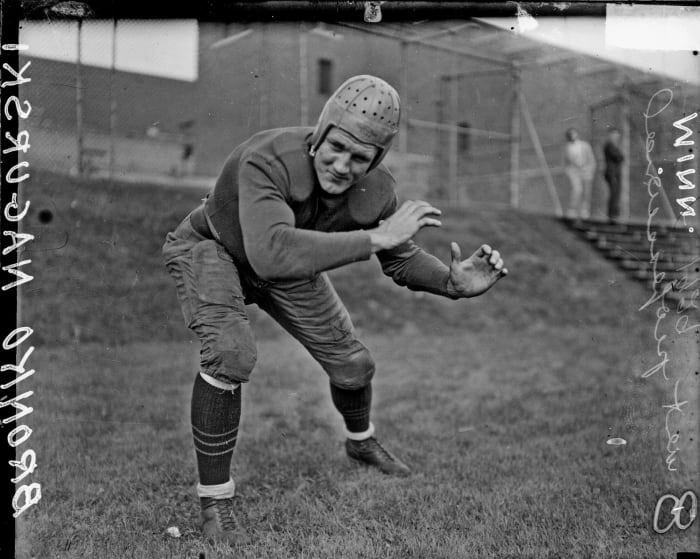
In Nagurski's day players would play on both sides of the ball. He excelled at both fullback and defensive tackle and made All-America teams at both positions. The Football Writers Association of America award the Nagurski Trophy to college football's best defensive player each year.
Tommy Nobis, Texas

Nobis is one of the most revered players in Longhorns history, having averaged nearly 20 tackles a game for his career. He was all over the field and crushed everything that came near him. He was such a bruising player that the coaches would eventually play him at offensive guard to get him on the field more. He won the 1963 national championship with Texas and won the Outland, Maxwell and Knute Rockne Awards.
Merlin Olsen, Utah State
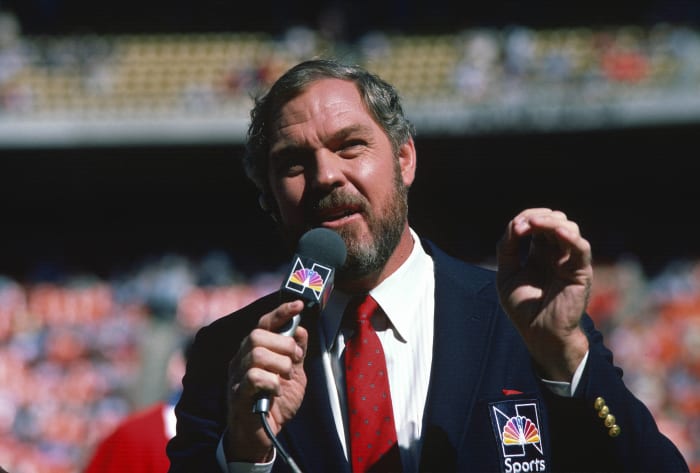
Utah State isn't thought of a football power, but Olsen had the Aggies there in the early 1960s. Olsen was a first-team All-American in his junior and senior seasons and won the Outland Trophy in 1961. His junior season, he anchored a defense that allowed only 6.5 yards per game. (As a senior, the defense game up only 7.8 ppg.)
Julius Peppers, North Carolina

Peppers not only was an All-American football player at North Carolina, but he also was a key role player for its 2000 Final Four basketball team. Just on the football field, he is second in school history with 30.5 sacks, picked off five passes and returned two for touchdowns (plus a fumble recovery for a touchdown). He won the Bednarik, Lombardi and Willis Awards.
David Pollack, Georgia

Pollack was a three-time first team All-American for the Bulldogs. (Only Herschel Walker had done that at Georgia.) His 36 sacks at Georgia is a school record and the third best all time. In 2004, he won the SEC Defensive Player and the Player of the Year award, Bednarik, Lott, Lombardi and Hendricks Awards.
Ed Reed, Miami

Even on a team as scary good as the turn-of-the-century Miami Hurricanes, Reed still stood out as one of the best. Before there were turnover chains at the U, the safety picked off eight passes as a junior and nine as a senior and for his career returned five picks for touchdowns. He holds school records for interceptions, interception return yards and interceptions returned for touchdowns.
Jerry Robinson, UCLA

Robinson was a tackling machine. He once had 28 tackles against Air Force and 23 tackles against rival USC. He was a three-time All American including twice a unanimous choice. Not only was he a great tackler (468 career) but he also returned three interceptions for touchdowns.
Deion Sanders, Florida State
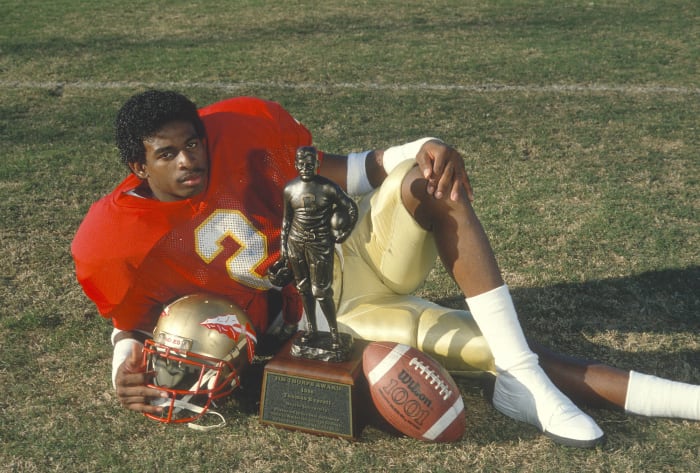
"Prime Time" played football, baseball and ran track at Florida State. Sanders was an All-American in 1987 and 1988 while recording 14 interceptions during his college career. He even returned an interception for 100 yards for a touchdown. He also led the nation in punt return average in 1988.
Warren Sapp, Miami
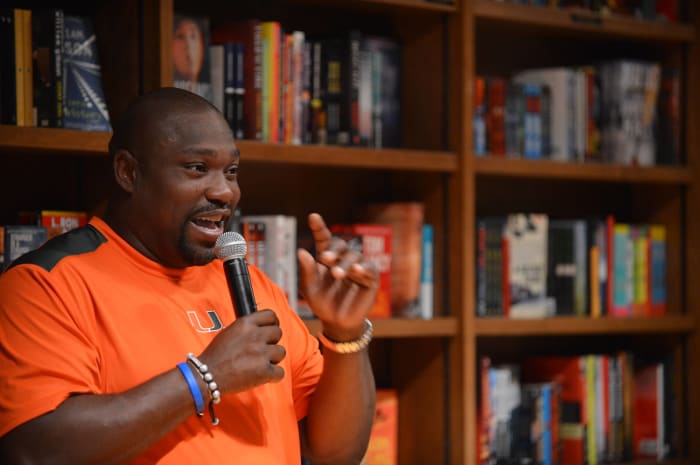
Sapp fit the Hurricanes' image. He was brash, controversial and extremely talented. He was a load as a defensive tackle who disrupted plays with his strength and quickness for a man of his size. His 1994 season was outstanding, winning the Lombardi, Nagurski, Outland and Willis Awards as well as being named the Big East Defensive Player of the Year. His college career was marred by alleged drug use rumors that swirled before the 1995 NFL Draft.
Lee Roy Selmon, Oklahoma
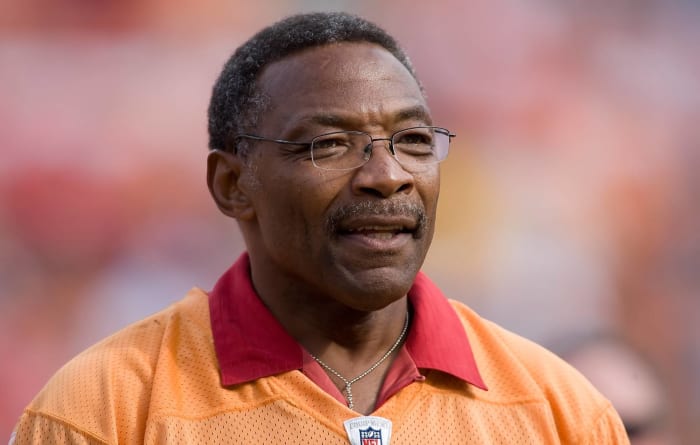
Selmon led one of the best defenses in college football history that won national championships in 1974 and 1975. In his senior season, he won both the Outland and Lombardi Awards and was the top overall pick in the 1976 NFL Draft. Not only was he a great football talent, but he also was one of the classiest men off the field and earned the respect and admiration of his peers.
Mike Singletary, Baylor

Singletary was a monster at Baylor, recording a school record 662 tackles during his time at Waco. As a sophomore he set the school's single season tackles record (232) and had 35 tackles in a game against Arkansas. He was an All-American as a junior and senior as well as an All-Southwest Conference performer both years.
Bruce Smith, Virginia Tech
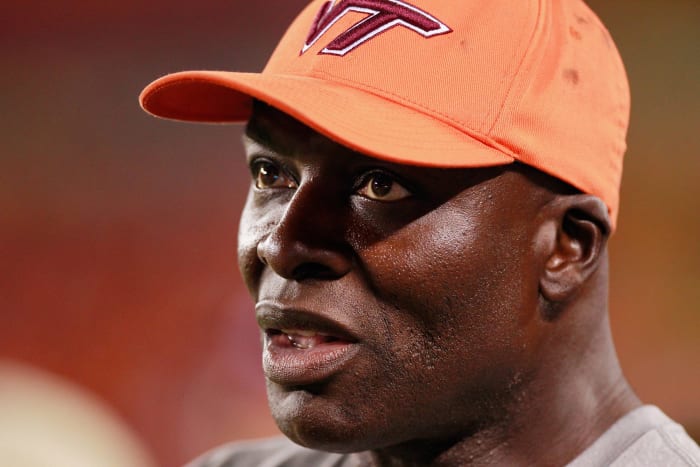
Smith was known as "The Sack Man" after piling up 44 of them while in Blacksburg. Half of those sacks came during his junior season. He won the Outland Trophy as a senior and would become the No. 1 overall pick in both the NFL and USFL drafts in 1985 and go on to be one of the best defensive players in the history of the NFL.
Bubba Smith, Michigan State

Charles "Bubba" Smith was an All-American defensive end in 1965 and 1966. His 6-foot-7 frame made him recognizable during every game (and helped in his postplaying career as an actor). Spartans fans would chant "kill, Bubba, kill" during games and especially after he made a big play. During his junior and senior seasons, Michigan State compiled a 19-1-1 record, two Big Ten titles and held opponents to a conference record low 34.6 rush yards a game.
Chris Spielman, Ohio State

Spielman is the Buckeyes all-time leader in solo tackles and also owns the single game mark. Yet it wasn't his statistics that endeared him as much as his drive and effort as if every play was his last. He won the Lombardi and Chic Harley Awards and as a senior was the MVP of the Cotton Bowl.
Terrell Suggs, Arizona State

Suggs had 44 sacks in three seasons with the Sun Devils and set a school record for tackles for losses. In a game against Washington in 2002, he sacked Huskies quarterback Cody Pickett 4.5 times. He would go on to become the Pac-10 Defensive Player of the Year that year.
Ndamukong Suh, Nebraska

Suh was such a dominant force that he was a legitimate candidate to win the Heisman Trophy going into the 2009 season. Though he didn't win it, he won pretty much every other award he was eligible for. He was named the AP Player of the Year, won the Nagurski, Bednarik, Lombardi and Outland Trophies and was a unanimous All-American.
Jack Tatum, Ohio State

Tatum went to Columbus as a running back, but assistant coach Lou Holtz convinced Woody Hayes to move him to defensive back. Tatum shined with his bruising hits and the ability to cover the opposing team's top receiver. He was All-Big Ten three times and finished seventh in the 1970 Heisman voting. Ohio State went 27-2 during Tatum's three seasons with three Big Ten titles and a national championship.
Lawrence Taylor, North Carolina

Taylor is considered one of the best linebackers in football history. As a Tar Heel, his aggressive and reckless playing style put fear in coaches as well as opponents. It all came together as a senior when he recorded 16 sacks and won the ACC's Player of the Year Award.
Sean Taylor, Miami

The 2001 Hurricanes team is regarded as one of the most talented ever, and Taylor still saw a lot of time as a freshman. He won a national championship in 2001 and got to the title game in 2002. His junior season he had 10 interceptions, returning a school record three for touchdowns. Taylor was known as a ferocious hitter and led Miami in tackles his junior season.
Derrick Thomas, Alabama
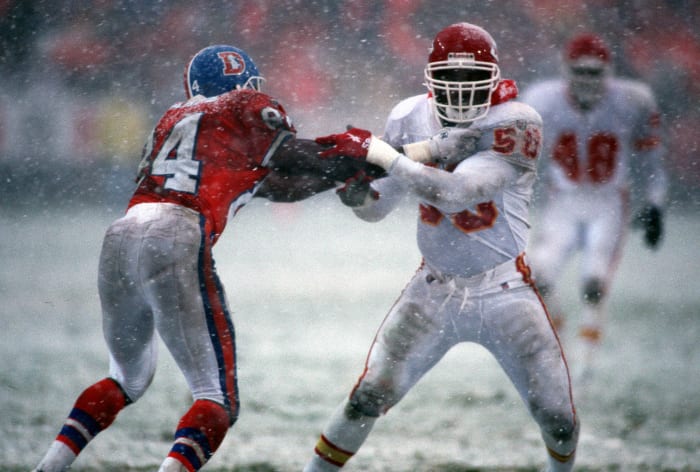
Thomas was a feared pass rusher who dominated the SEC in the late 1980s. In 1988, he set the FBS record with 27 sacks during the season (the record still stands) and totaled 52 sacks during his career in Tuscaloosa. That year he won the Butkus Award for top linebacker and would finish 10th in the Heisman vote.
Randy White, Maryland

White began his Maryland career as a fullback. After a two-win season, he was moved to the defensive end and the rest is history. He improved each season and would have an outstanding senior season where he won the ACC Player of the Year Award as well as the Outland and Lombardi Trophies.
Reggie White, Tennessee

White is one of the best players to ever play football...at any position. He was a dominant force for the Volunteers who could do everything on defense: sack quarterbacks, stuff the run, block extra points and field goals, pick off passes and make other big plays. As a senior, he had 100 tackles and a single-season school record 15 sacks.
Roy Williams, Oklahoma

Roy Williams will be in Sooners lore for his play against Texas in the 2001 Red River Shootout. He was one of the most feared safeties in college football and helped lead Oklahoma to the 2000 national championship. He won the Nagurski and Thorpe Awards as a junior and was a consensus first team All-American.
Charles Woodson, Michigan

A no-brainer that the only primary defensive player to win the Heisman would be on this list. (He's also the last Heisman winner who wasn't a quarterback or running back.) He had 18 career interceptions for Michigan and 30 passes defended. His defensive prowess helped lead the Wolverines to the 1997 national championship.
Rod Woodson, Purdue
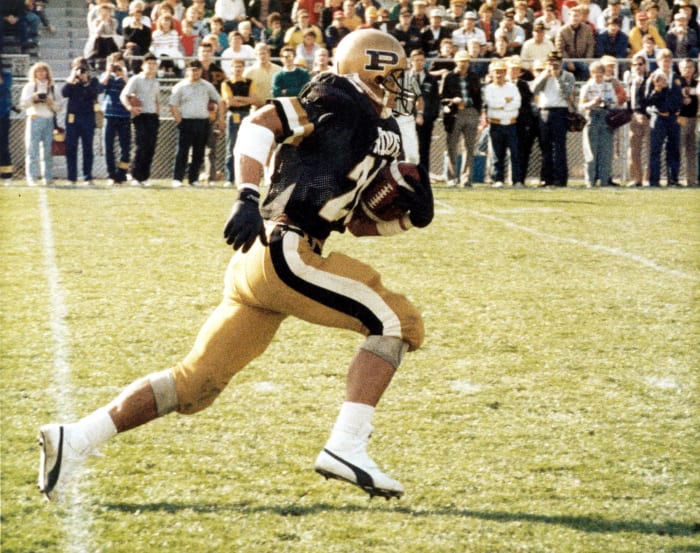
Woodson could do everything at Purdue. Not only was he a two-time All-American cornerback, but he also returned kicks, punts, played running back and wide receiver — while also running track where he was twice an All-American. Woodson was a three-time All-Big Ten performer and left Purdue with several school records. (Most have since been broken.) In his final game, he rushed for 93 yards, caught for 67 yards, had 10 tackles and forced a fumble.
Shiloh Carder has over 20 years experience in covering sports for various websites and has been with Yardbarker since 2009. A Charlotte, NC native who now lives outside Cincinnati, he has covered college basketball, college football, NFL and NBA. You can find him on Twitter/X at @SportzAssassin
More must-reads:
- Five running backs still available for Cowboys in 2025 NFL Draft
- LeBron James gives blunt response to dealing with nagging injuries
- The 'NBA playoff triple-doubles leaders' quiz
Breaking News
Trending News
Customize Your Newsletter
 +
+
Get the latest news and rumors, customized to your favorite sports and teams. Emailed daily. Always free!
PRIVACY POLICY EDITORIAL POLICY CONTACT US
ABOUT YARDBARKER TERMS OF SERVICE
Use of this website (including any and all parts and
components) constitutes your acceptance of these
Terms of Service and Privacy Policy.
This site is for entertainment purposes only.
There is no gambling offered on this site.
Gambling Problem? Call 1-800-Gambler.









